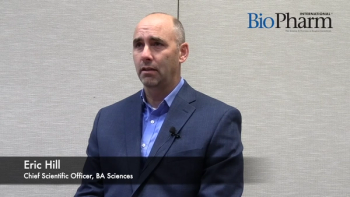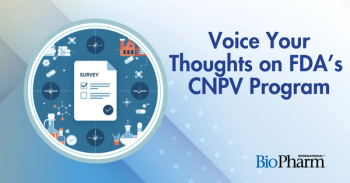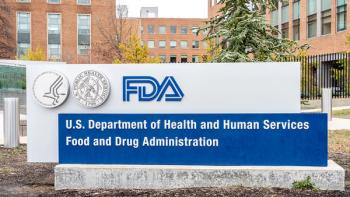
- BioPharm International-02-01-2020
- Volume 33
- Issue 2
The Need for Advanced Process Modeling for New Therapeutic Biologics
The trend toward personalized medicines includes more complex manufacturing cycles that can benefit from advanced process modeling early on in the therapeutics’ development.
Process modeling plays a crucial role in process development and in scaling up bioprocesses. As bioprocessing workflows increasingly shift toward automation, the approach to modeling also needs to evolve to incorporate next-generation tools and software. For example, how would process modeling take advantage of digitalization and artificial intelligence? The focus on precision medicines also means there is a need to develop a better or new understanding of workflows, whose efficiency and cost can be predicted through process modeling.
How modeling fits QbD
Nearly all aspects of biopharmaceutical processing technology use model-based methods because modeling can decrease the amount of experimental effort it would take to design a process while increasing the robustness of that process. Modeling can also provide process transparency, which in turn can clarify and highlight the rationale behind making certain decisions for the process. What’s more, process modeling can be implemented, and is strongly encouraged, early on in the lifecycle process of product development, as early as the preclinical stages. The modeling approach can also bring early consideration to the regulatory aspects of drug development and future commercialization, allowing process developers to troubleshoot what may be regulatory challenges or hurdles as they advance a product candidate. FDA’s quality-by-design (QbD) and validation initiatives also encourage the use of modeling early on.
While QbD does not define manufacturing design space or specific protocols, it does discuss the need for a systematic approach to drug development and manufacturing. FDA believes that a QbD approach, similar to process modeling, should start with predefined objectives. There should also be an emphasis on product understanding and process control, and that the design of a process should be grounded in “sound science” and quality risk management (1).
FDA has noted in the past that many innovator pharma companies have, for the most part, embraced the science and risk-based approaches in QbD and that other companies, such as generic and biotech companies, have started to adopt QbD as well (1). However, this is not necessarily the case for process modeling.
Despite the advantages that a model-based approach can confer, modeling is still not fully implemented by industry. For one thing, the model-based approach may not yet be fully accepted. Further, the industry lacks “user-friendly tools” and clear workflows for setting up specific process models, and existing process control systems do not implement model-based approaches (2).
While a model for a bioprocess can align bioprocess specifications with the technical framework needed to develop the required information technology (IT) around it, implementing a model for a bioprocess can be particularly challenging. For example, the bioprocess model would have to capture relevant information consistently as well as thoroughly to allow both researchers and IT developers understand the process requirements. The model would need to capture alternatives and exceptions to the standard, in addition to capturing normal operations, and, incorporating automation into the model, it must be easily executable.
Types of modeling approaches
There are many different types of models used in the development of a new process for a novel therapeutic, says Andrew Sinclair, managing director, Biopharm Services, a UK-based developer of technology solutions and services for biopharmaceutical manufacturing. Sinclair notes that there are specific challenges to some of the newer personalized therapies and gives the following examples of modeling techniques that can be broken into several areas:
- Design of experiments and statistical analysis
- Deterministic models for optimization
- Scale-up models linked to experimental data
- Data modeling, analysis, and visualization
- Whole process modeling and optimization
- Economic analysis focusing on cost of ownership, cost of goods, and risk mitigation
- Supply chain modeling.
“Each has a role to play, the extent of which depends on the application,” Sinclair states. “Models are tools as a part of a toolset and are applied based on use case, so each modeling approach has different strengths and limitations depending on the actual application and product process approach.”
Advanced process modeling enables and supports the digitalization and automation of bioprocessing through the capture of large datasets, data analytics, and visualization, Sinclair adds. “Using model outputs linked with experimental and, where it exists, production data opens significant opportunities to apply machine learning techniques and build knowledge that has applications across products.”
The ability for advanced process modeling to capture and analyze large datasets helps biomanufacturers make sense of all the data. “The use of structured data in large datasets opens significant opportunities both in terms of guiding future process development activities and improving the current set of predictive models. This is key to automating development activities and optimizing processes through machine learning, which will augment process modeling approaches,” says Sinclair.
Personalized medicines
Having a model-based approach is especially useful for personalized medicines, which typically target niche disease markets and small patient populations, but for which each single dose is costly. Focusing on these new therapeutic areas brings up some key issues. For instance, Sinclair points out there is little fundamental understanding of these processes that can support deterministic modeling linked to process optimization. “Here, the emphasis is on statistical approaches,” he says.
An important requirement for the newer therapies is the need for supply-chain modeling, where there is a strict time limit from the point of taking cells from the patient to the return of the treatment to the patient, Sinclaid emphasizes. In these cases, he continues, the process involves transportation and multiple centers for processing the material.
Earlier is better
Process modeling has a significant role to play in the lifecycle of a therapeutic product. Because of this, generally, the earlier it is implemented, the better, as there is greater scope for optimization of the process, Sinclair says.
“As a process goes through the development lifecycle into production, the degrees of freedom reduce. Early on, the process sequence and technologies can be changed, including cell lines and expression systems. By the time we are in production, however, these are fixed. Therefore, to fully optimize the process, it is important to model early and be able to predict the outcomes using process economic models. This allows for changes that can have orders of magnitude impacts on economics and looks at the best ways to achieve quality and productivity outcomes,” Sinclair concludes.
References
1. C.M.V. Moore, “Quality by Design-FDA Lessons Learned and Challenges for International Harmonization,” presentation at International Conference on Drug Development (Austin, TX, Feb. 28, 2012).
2. P. Kroll, et al., Pharm Res. 34 (12) 2596–2613 (2017).
Article Details
BioPharm International
Vol. 33, No. 2
February 2020
Pages: 28–30
Citation
When referring to this article, please cite it as F. Mirasol, “The Need for Advanced Process Modeling for New Therapeutic Biologics,” BioPharm International 33 (2) 28–30 (2020).
Articles in this issue
almost 6 years ago
Managing Risk for Cell and Gene Therapy Logisticsalmost 6 years ago
The Call for a Rapid Responsealmost 6 years ago
Data Management Practicesalmost 6 years ago
Biopharma Analysis Benefits from New Technology and Methodsalmost 6 years ago
Cell Therapies: The Living End of Growth Opportunitiesalmost 6 years ago
Fresh Thinking in Biologic Drug Formulationalmost 6 years ago
Cell Culture Variables for Gene Therapy Vectorsalmost 6 years ago
Challenges in Vector Purification for Gene Therapyalmost 6 years ago
Global Supply Issues Create ChallengesNewsletter
Stay at the forefront of biopharmaceutical innovation—subscribe to BioPharm International for expert insights on drug development, manufacturing, compliance, and more.




